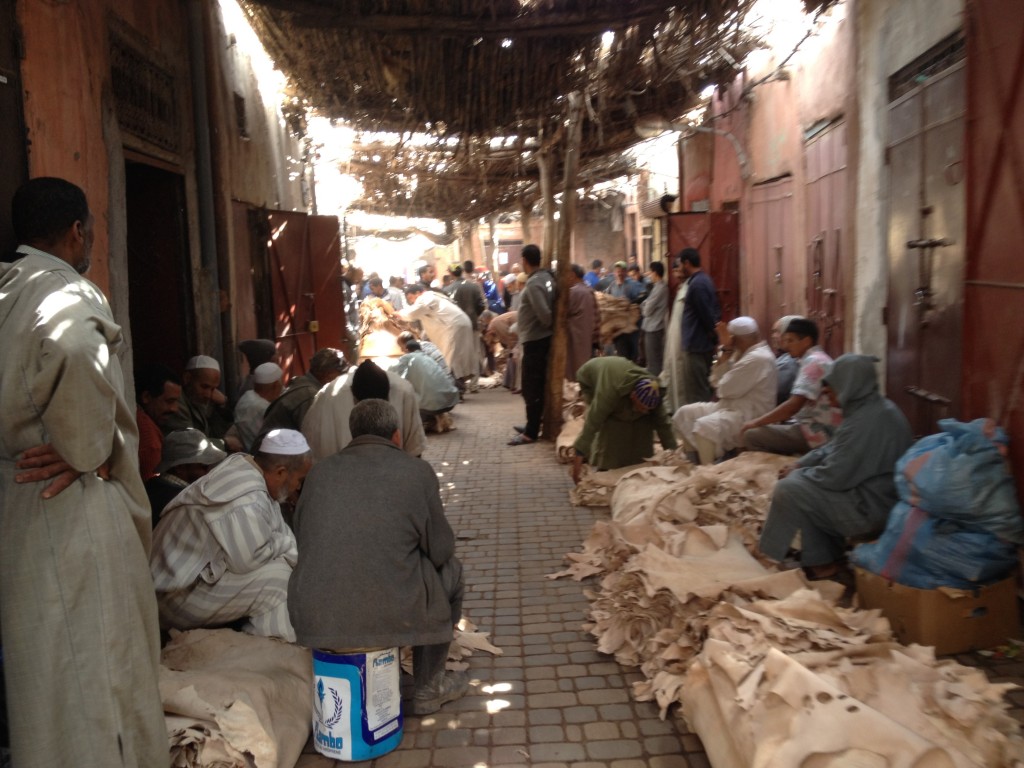I had a bit of a wander around Marrakech on my holiday there last week, and a day-trip to the Atlas Mountains too. Morocco is a medium development country according to the Human Development Index, and that seemed spot on from the few things that I saw. My reaction set me to wondering exactly what it was that a casual visitor encounters that indicates the economic development status of any particular place. Drawing on other travels, I settled on these non-standard but easily visible indicators – but maybe others can challenge them or think of better ones? The criterion (apart from validity) is that they should be easy for anybody to spot even if they know next to nothing abut a place.
1. Waste management – on an ascending scale from human to household to industrial waste (culminating in invisible greenhouse gas management, I suppose). The worst slums I’ve visited have no sewerage, the richest cities are clean and have good air quality. Along the way you get places where people dump rubbish on waste ground, and that includes, for example, parts of Sicily. (I think this indicator also explains why British householders get so cross when their local council tries to reduce garbage collections from weekly to every two weeks. Dealing with rubbish is a basic of effective government.)
2. Paved roads and floors. If they aren’t paved, there is dust or mud everywhere. Houses and children are impossible to keep clean. Transportation is slow – a donkey may be more efficient than a vehicle in the circumstances. Like indicator (1), this impinges on women’s time as well, as women do most cleaning/clearing up.
3. In the same vein, domestic efficiency. I can’t speak for Moroccan homes, having only seen one that was on display for gullible tourists as an example of a “traditional” house; but was interested to learn once from a student from Cameroon that he had never realised that one could have cupboards or shelves that gave things in the home their specific locations. He said his mother could never find anything because items were put down anywhere. I don’t know how universal this indicator is, so include it only tentatively, but nevertheless I think the value of women’s time is a crucial marker of a country’s development. That value is reflected in efficiency in the home and labour-saving devices and features.
4. No set prices. I know there is far, far less everyday haggling than one experiences as a tourist in the market. Even so, having labelled prices that are the same for every customer is essential for the convergence of prices and market efficiency. The alternative is price discrimination to the benefit of sellers rather than consumers, and an absence of the concise summary of information about preferences and resources that is key to the magic of markets. See John McMillan’s brilliant book [amazon_link id=”0393323714″ target=”_blank” ]Reinventing the Bazaar: A Natural History of Markets[/amazon_link] for more on this.
5. Finally, lack of scale. My generalisation here is that lower income countries are more likely to have very few private sector companies operating at sufficient scale. Scale is an important – and sometimes overlooked – aspect of productivity. Here is a picture of the wholesale market for hides in Marrakech, which I stumbled into. These traders have at most a couple of dozen hides each, and are selling them to manufacturers of leather goods in even smaller amounts.(It was an open outcry market.) One also peers into workshops where youngsters are making small numbers of shoes and bags by hand. Handicrafts? Or just inefficiently small scale?

In the market for hides in Marrakech (Picture by Rory Cellan-Jones)

